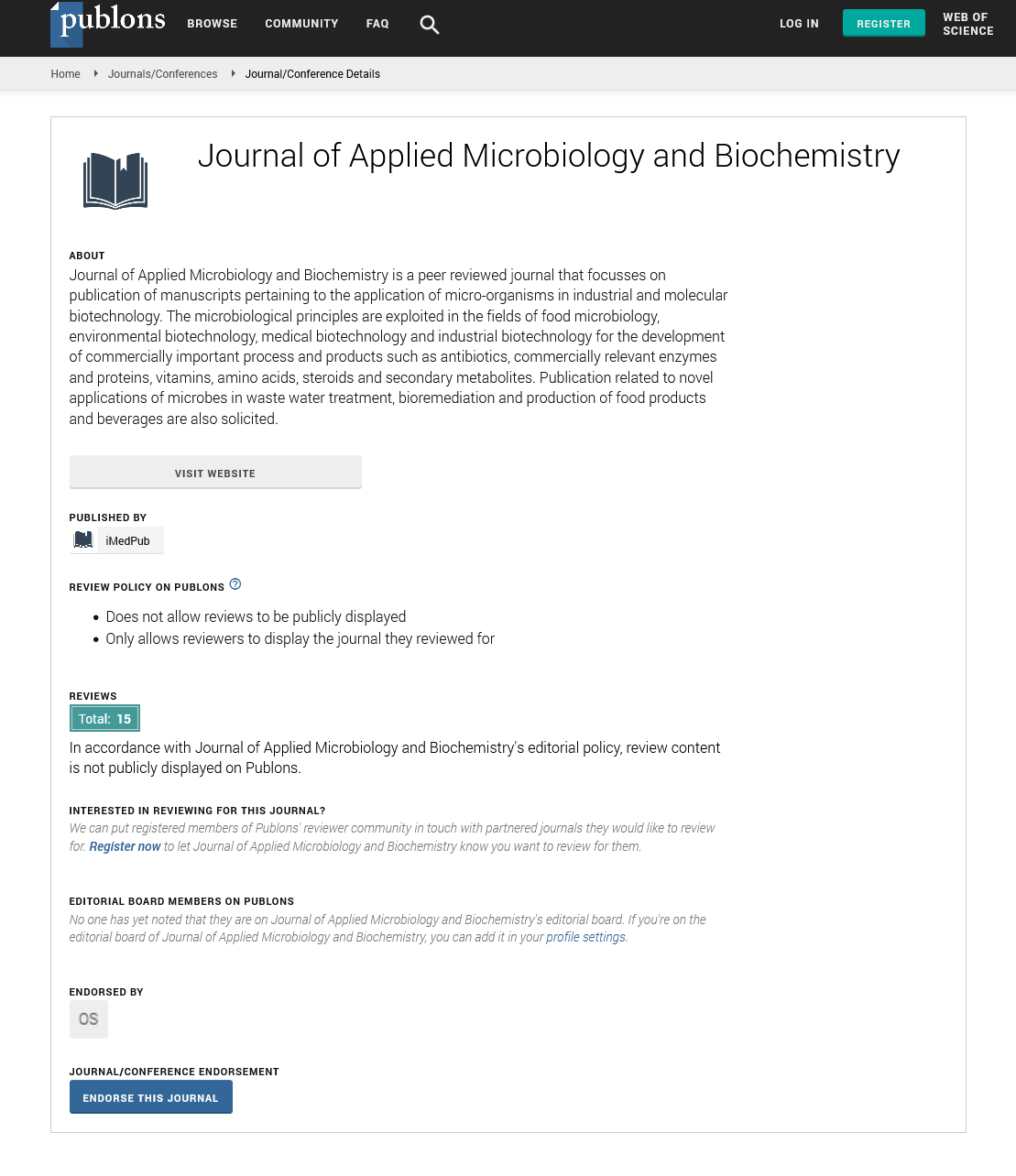ISSN : ISSN: 2576-1412
Journal of Applied Microbiology and Biochemistry
Abstract
Antioxidant and Antiplasmodial Activity of Newbouldia laevis, Cnestis ferruginea and Dialium dinklagei, Three Traditional Plants used for Malaria Treatment in Côte d’Ivoire
Background: Resistance of human malaria parasites to antimalarial compounds remains a crucial public health concern. In addition, the oxidative stress induced during malaria infection would seem to result from an imbalance between this decrease in antioxidant enzymes and the increased production of Reactive Oxygen Species (ROS). Treatment with antioxidants would aim to strengthen the antioxidant systems already present and protect the host. Investigating plants used in traditional medicine to treat malaria remains a credible option for new anti-malarial drug development. The study aims to identify local natural compounds with antimalarial and antioxidant activity with a strong potential for the development of new treatments against malaria.
Materials and methods: SYBR GREEN fluorescence method was used to evaluate the In vitro inhibitory activity of the extracts, chloroquine, artesunate and quinine against Plasmodium falciparum field isolates and two laboratory references strains of Plasmodium falciparum (3D7 and Dd2). The haemolytic activity of extracts showing good antiplasmodial activity was also evaluated. The IC50 and the corresponding correlation coefficients were determined graphically, using In Vitro Analysis and Reporting Tool (IVART) software of WWARN.
Results: Our findings indicate that only decoction crude extracts of Dialium dinklagei and Cnestis ferruginea and methanolic crude extract of Newbouldia laevis had a promising antiplasmodial activity. The liquid-liquid partition improved the antiplasmodial activity to 1.22 ± 0.37 μg/mL, 6.11 ± 1.3 μg/mL and 4.37 ± 0.77 μg/mL respectively for the F3 extract of Dialium dinklagei, F3 of Newbouldia laevis and F2 of Cnestis ferruginea.
The DPPH quantitative test showed good antioxidant activity of the plant extracts with dose dependent DPPH radical scavenging activity. The antioxidant test carried out on TLC plates gave yellow spots on a purple background indicating the anti-radical activity of the fractions. There was less than 1% hemolysis at the concentration of 200 μg/mL of plant extracts.
Conclusion: This work provides an opportunity to find molecules that can neutralize both the parasite and the oxidative stress induced by the disease.
Author(s): Karim Tuo*, Sylvain Beourou, Kigbafori Dieudonn√ɬÉ?√ɬā√ā¬© Silue, Karamoko Ouattara, Allico Joseph Djaman, Adama Coulibaly and Offianan Andre Toure
Abstract | Full-Text | PDF
Share This Article
Google Scholar citation report
Citations : 342
Journal of Applied Microbiology and Biochemistry received 342 citations as per Google Scholar report
Journal of Applied Microbiology and Biochemistry peer review process verified at publons
Abstracted/Indexed in
- Google Scholar
- China National Knowledge Infrastructure (CNKI)
- Cosmos IF
- Directory of Research Journal Indexing (DRJI)
- Publons
- Secret Search Engine Labs
Open Access Journals
- Aquaculture & Veterinary Science
- Chemistry & Chemical Sciences
- Clinical Sciences
- Engineering
- General Science
- Genetics & Molecular Biology
- Health Care & Nursing
- Immunology & Microbiology
- Materials Science
- Mathematics & Physics
- Medical Sciences
- Neurology & Psychiatry
- Oncology & Cancer Science
- Pharmaceutical Sciences
